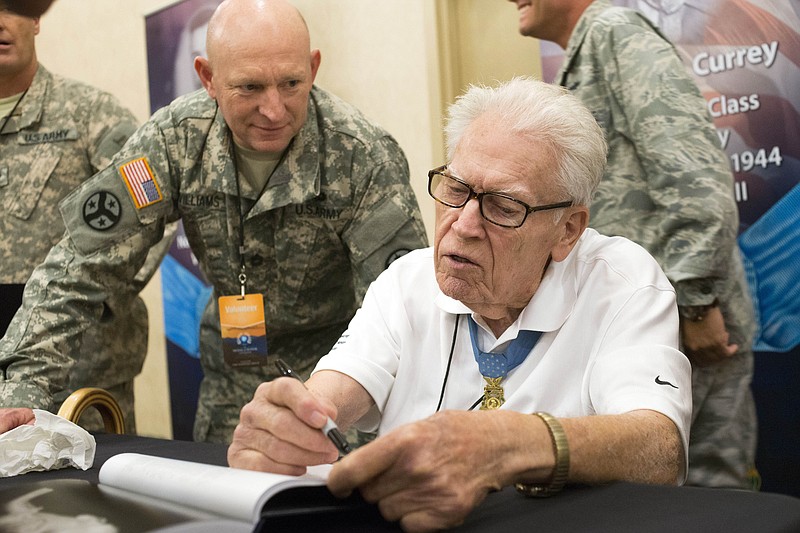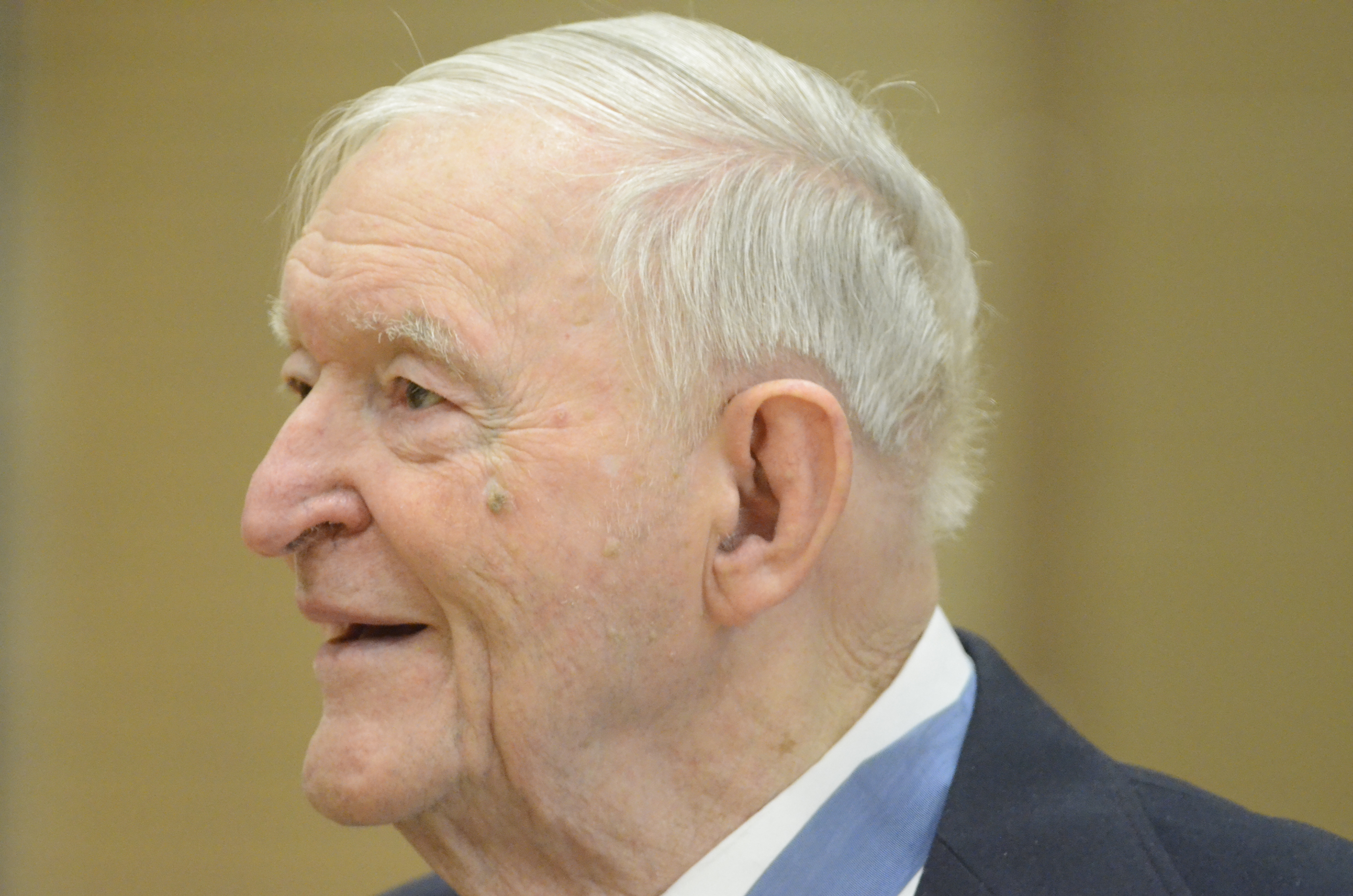The town of Malmedy in the Ardennes region of Belgium is remembered for one of the most notorious war crimes against American prisoners in World War II. More than 80 unresisting GIs were shot to death on the town's outskirts by members of a German SS armored division in December 1944, soon after their surrender on the second day of the Battle of the Bulge, a surprise counterattack by the Germans bringing huge Allied casualties along a broad front.
Four days after what became known as the Malmedy massacre, Francis Currey, a lanky 19-year-old Army private in the 30th Infantry Division, carried out an extraordinary feat of arms to repulse an onslaught by the 1st SS Panzer Division a few miles from where its members had committed the massacre.
"Doughboy Throws Arsenal at Nazis," read a headline in The New York Times.
Currey and other infantrymen were in foxholes, backing up U.S. anti-tank troops.
The Germans overran the anti-tank positions. But during the next 24 hours, Currey wielded his M1 rifle, a bazooka, a Browning automatic rifle, two types of machine guns and an assortment of grenades to knock out several German tanks and rescue wounded Americans.
He received the Medal of Honor in July 1945, by which time he had been promoted to sergeant.
The citation said, "Through his extensive knowledge of weapons and by his heroic and repeated braving of murderous enemy fire, Sgt. Currey was greatly responsible for inflicting heavy losses in men and material on the enemy, for rescuing five comrades, two of whom were wounded, and for stemming an attack which threatened to flank his battalion's position."
Currey died Tuesday at his home in Selkirk, New York, near Albany. He was 94. His death, which was confirmed by his son Michael, leaves two veterans who received the Medal of Honor in World War II still living.
Chattanooga native Charles H. Coolidge, 98, was cited for bravery in France while an Army technical sergeant.
And Hershel Williams, 96, was decorated for heroism in the battle for Iwo Jima while a Marine corporal.

